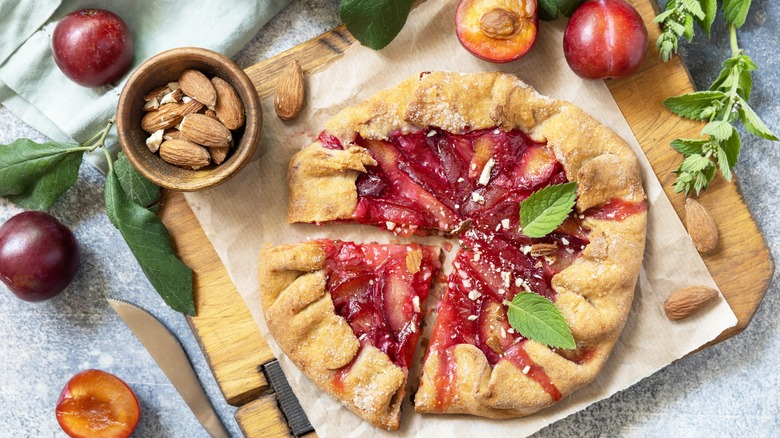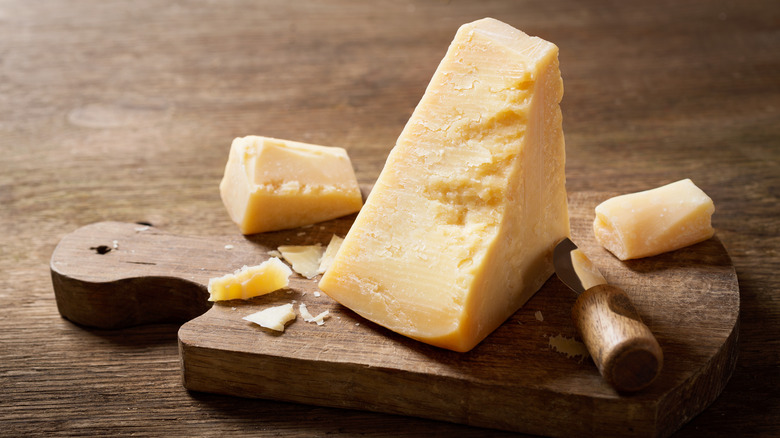The Cheesy Addition For A Super Crispy Galette
The French have proven once again that "dessert" is their middle name, and to that, we're spotlighting the French treat known as a galette. Think of a galette as a cross between a pie and a tart, per Food Network, which utilizes one of several bases, including puff pastry dough, bread, crêpes, or choux pastry, via Spoon University. This is followed by a myriad of filling options, ranging from fruits and chocolates to cheese and vegetables.
Luckily, galettes aren't complicated to make, and you don't even need a tart pan. As Baking Bites explains, the pastry dough first gets heaping dollops of your filling of choice. There should be some space between the filling and the perimeter of the dough so the dough can drape over the outer parts of the filling. This makes the top part exposed; In other words, the dough doesn't cover the entirety of the filling like a pie. The galette is then baked in an oven for up to 50 minutes, per MasterClass, though oven times and temperatures may vary.
But a galette is not without a few potential mishaps along the way, and one of them has to do with sogginess, explains America's Test Kitchen. This is because moisture likes to seep out of the filling, and the only place it can go is down into the crust. Fortunately, there's an easy fix — and all you need is this cheesy addition.
Grab some parmesan cheese
According to America's Test Kitchen, parmesan cheese is your new BFF when it comes to soggy galette crust. But to be fair, they emphasize that this tip is for fillings of corn, tomatoes, and bacon (aka savory ingredients). For sweet fillings, it's best to pick a cheese that not only crisps up nicely but is also an appropriate pairing.
Wholesome Yum discusses different types of cheese products for its cheese crisp recipe, which makes sense in this context since, again, the goal is to find a kind of cheese that gets crispy. They explain that parmesan and cheddar are the top picks, followed by pepper jack, Swiss, colby, and mozzarella. For comparative purposes, regular mozzarella has a moisture content of 52% to 60%, according to the USDA, while parmesan cheese has a moisture content of 32% or less, per the Code of Federal Regulations. In short, high moisture levels mean less crispy cheese and vice versa, as explained by Wholesum Yum.
Whichever type of cheese you pick, America's Test Kitchen mentions that the cheese (they use a quarter cup of parmesan as an example) should be added on top of the prepared and flattened dough before the filling. Then, proceed as normal with the galette recipe of your choosing, such as an apple galette.
Overall, think of cheese as a barrier between the filling and the dough, as it aids in preventing soggy textures and potential breakage within the dough.

